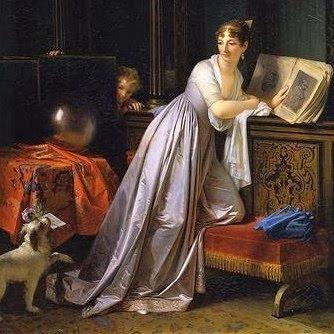Each art direction has its fans and critics. But the everyday genre in the visual arts occupies a special place - many prejudices are associated with it, it attracts viewers with an entertaining plot and is often criticized for this very reason, because for some it seems too petty and anecdotal. Some art historians have been trying for years to answer the question of whether it is worth writing routine.
Meanwhile, artists continue to use the everyday genre in painting, and ordinary people rejoice at such canvases and gladly purchase them for the interior.
How did this direction come about?
The scenes of everyday life inspired people in ancient times. Then art was a way of interacting with the outside world, an attempt to enhance the influence of magical rites. Therefore, the drawings are so striking in their vitality and emotionality. Ancient examples of Egyptian painting and small plastics express everyday motives of work, contain family, love, theatrical, and caricature scenes. Pliny the Elder wrote in his "Natural History" about the existence of special artists involved in the depiction of shops of barbers and shoemakers.
Everyday genre in painting of early Christianity
The beginnings of a new religion developed in a hostile atmosphere, hiding in the catacombs and using secret codes. The everyday genre in the fine arts of that period also relied on secret symbolism - paintings with fishing talked about baptism, scenes with construction hinted at the creation of church communities, and a fun feast was designed to reflect the bliss of souls in a paradise.
It was from the first Christian motifs that the direction turned into medieval art, where similar images began to be used on columns and in manuscript texts. In addition, the household genre was also widely used in the architecture of that time - examples can be seen in the stone patterns of Gothic cathedrals depicting lumberjacks and shepherds, winemakers and bakers. Such scenes clearly illustrated the course of earthly time, filled with daily affairs.
Renaissance development
At the beginning of the fifteenth century, the everyday genre in painting was supplemented by a special semantic direction. Artists began to depict carnival and wedding ceremonies, as well as scenes dedicated to the life of different classes. As in previous times, painters strove to fill every detail with symbolism. Candles were indications of human life, flowers and fruits - fertility, a bird in a cage depicted maiden chastity, and a broom was a way to get rid not only of litter, but also of evil spirits. Each thing and event was involved in a kind of theatrical performance. But all these allegories were combined with ultimate realism and spoke about the truth of life.

The focus was not on religious ideas, but on people and their earthly world in all its details. Revaluation of values in the appearance of market scenes is especially noticeable. Instead of gospel episodes, everyday artists spoke about peasants, inspired by the fruits of Mother Nature and her infinite energy. This mood is noticeable in the canvases of Peter Bruegel the Elder, Velazquez, Vermeer and Caravaggio. The lowest classes were depicted with love and charm, which had not been in art before.
Everyday genre during the Enlightenment
Despite all the picturesqueness, paintings of the Renaissance carried some didacticism. That is why, by the beginning of the Enlightenment, the everyday genre in the visual arts began to become obsolete. The motives that it was bad to drink and cheat, and to live in peace of family life was good, became completely hypocritical and discounted this trend. However, at the beginning of the nineteenth century, world, including Russian, artists of the domestic genre returned to him his former authority. For example, the painter Alexander Ivanov with his painting “The Appearance of Christ to the People” embodied some important ideas in this direction.

Venetsianov's paintings depicted social ailments with tremendous emotionality and without unnecessary hypocrisy, in the genre of critical realism, not inferior to the literary masterpieces of Fedor Dostoevsky. The writer himself noted that historical painters depict what they know as what happened, and genre writers act as eyewitnesses of the events shown.
Salon painting
By the end of the nineteenth century, the genre again had to face decline. Salon paintings reduced the images to the level of empty plots, cute gossip. But soon the everyday genre in the visual arts again returned to its previous level - the emergence of impressionism returned its meaning. The fleeting moments, skillfully noticed by the artists, were filled with meaning no less than the large historical canvases, returning its significance to everyday life.
Fairytale legends, everyday symbolism - this is what the thematic picture was dedicated to. The household genre was presented by such masters as Petrov-Vodkin, Borisov-Musatov, Khodler and Segantini. Korin represented the lyrically sad moments of life, and in
Kustodiev’s paintings everyday life appeared in a fair, colorful embodiment.
The genre of the twentieth century
The new era brought an artistic direction an incredible variety of species. Poster images, ironic observations, and philosophical thoughts appeared. The everyday art genre has become a universal way to portray life in its entirety, including holidays, scenes of childhood or old age, paintings full of realism. Peaceful work was glorified in the canvases. In contrast to the pseudo-monumental canvases, popular due to the political situation, the artless reflection of life evoked natural sympathy. By the end of the twentieth century, energetic, temperamental paintings appeared in the genre, perfectly reflecting the spirit of the time and at the same time enriching the tradition that has been preserved since the Middle Ages.